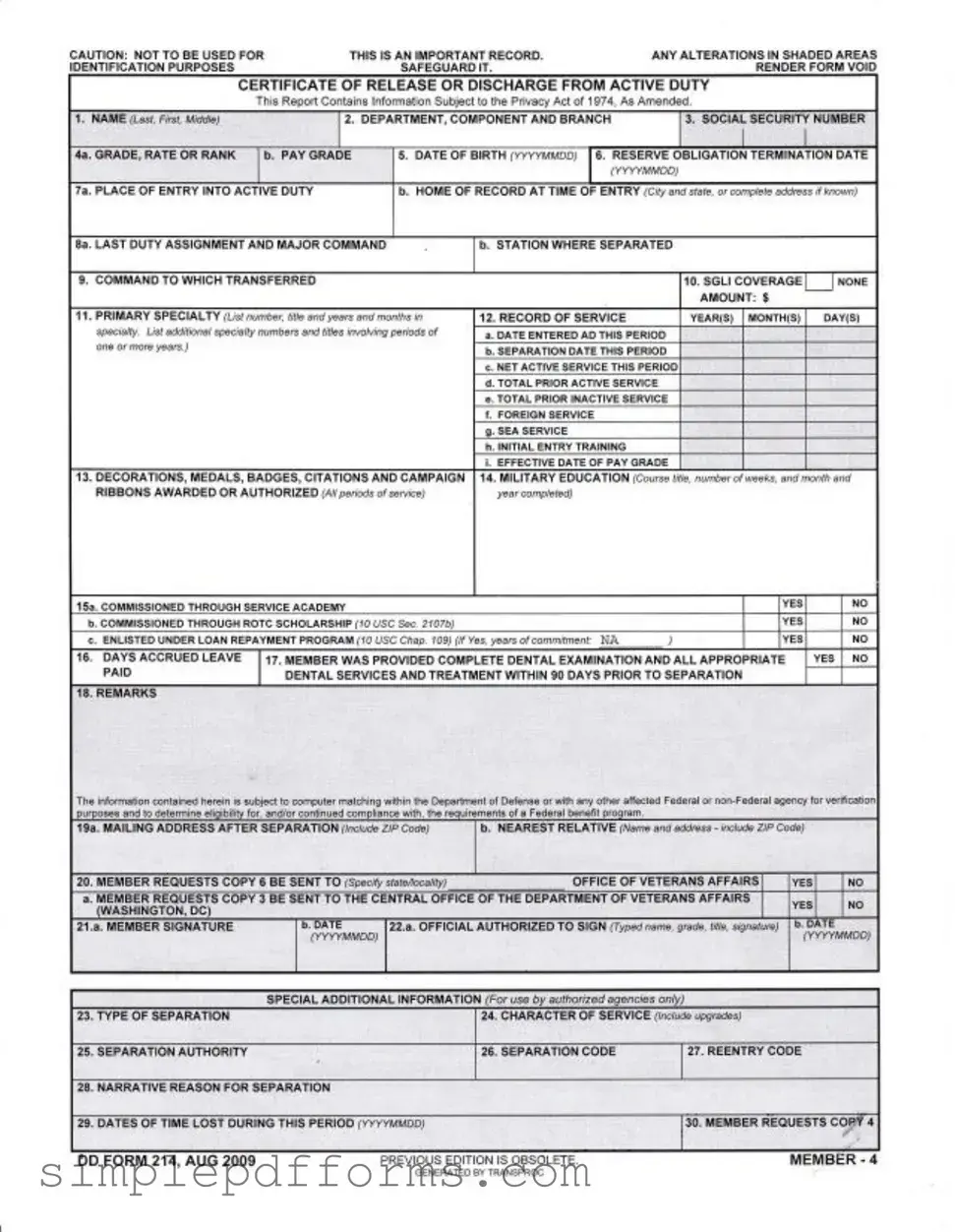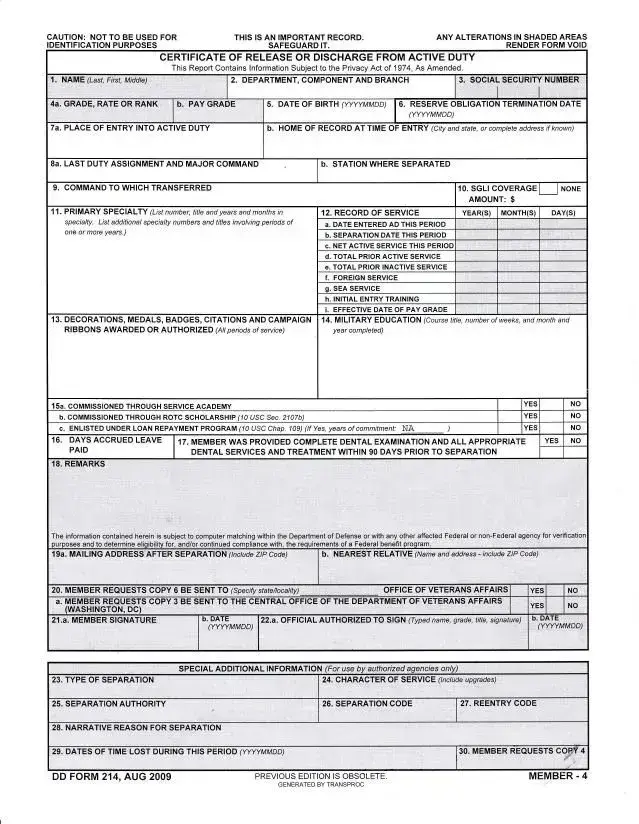Filling out the DD 214 form is a crucial step for service members transitioning from active duty. However, many individuals make common mistakes that can lead to delays or complications in processing. Understanding these errors can help ensure a smooth completion of the form.
One frequent mistake is incorrect personal information. Service members often enter their names, Social Security numbers, or dates of birth inaccurately. Even minor typos can cause significant issues later on, especially when verifying military service or applying for benefits.
Another common error involves the failure to include all necessary dates. The form requires specific dates, such as the date of entry into active duty and the separation date. Missing or incorrect dates can lead to confusion and may delay the processing of benefits.
Many individuals also overlook the importance of the character of service section. This part of the form outlines the nature of the service and can impact eligibility for certain benefits. Failing to accurately describe the character of service can lead to misunderstandings or complications in future applications.
Additionally, neglecting to sign the form is a surprisingly common oversight. Without a signature, the DD 214 is incomplete and cannot be processed. It's essential to double-check that all required signatures are present before submission.
Some people mistakenly alter shaded areas on the form. The instructions clearly state that any alterations in these areas render the form void. Ignoring this caution can result in the need to redo the entire form.
Another mistake is the incomplete military education section. This section is vital for documenting training and qualifications. Incomplete information can lead to missed opportunities for education benefits or recognition of training received during service.
Moreover, many service members fail to request copies of the form for their records. It's important to have personal copies for future reference, especially when applying for veteran benefits or employment opportunities that require proof of service.
Lastly, not reviewing the form before submission can lead to various errors. Taking a moment to review the completed form can help catch mistakes that may have been overlooked during the filling process. A thorough review can save time and prevent unnecessary complications down the line.
By being aware of these common pitfalls, service members can better navigate the process of completing the DD 214 form, ensuring that they receive the benefits and recognition they deserve.

